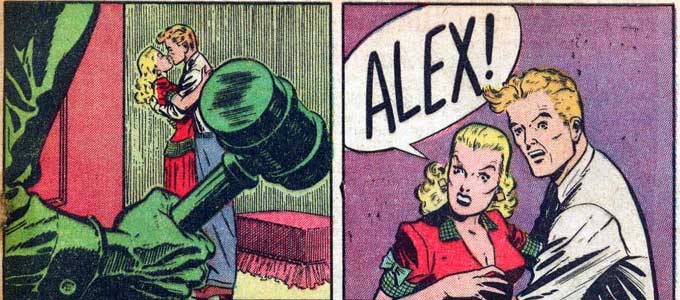This page may contain one or more affiliate links, which means that if you purchase a product through that link, I may receive compensation. The links will be identified with the text "affiliate link". Click to learn more.
I remember being a little kid and watching the Tales From The Crypt show, which was wildly inappropriate for my age. It often had bizarre and gory story lines with surprise endings. Before each story, they would show the cover of a comic book, and I used to wonder…. was Tales From The Crypt really a comic?
Yes, the Tales From The Crypt comic is very real, and has a rich history behind it. The Comic Code Authority, known for its strict regulatory rules, had publisher EC Comics under fire for blame of juvenile delinquency. And by that I mean they thought that kids were going to shoot each other in the face because they saw it happen in a comic book, that sort of thing. The man behind the comic, Bill Gaines, explains it really well in a documentary called Comic Book Confidential. The Comic Code Authority banned comics from having titles or themes like death or crypt, causing this comic series to end.
The Tales From The Crypt comic series, which became a movie in 1972 and a television show in the 90s, is legendary. The storyteller known as The Crypt Keeper is witty and fun. The character exists in the comics as well, but not as a dead corpse puppet like when it was on TV. What is bizarre is that there was even a cartoon show for kids based on the more graphic version of the show. The logic of this decision escapes me. It might be because kids are always wishing that they were a few years older, and whatever adults are interested in, they want to be as well.
Not all the stories from the TV show came from the comic Tales From The Crypt. For example, a classic episode starring Demi Moore is called Dead Right. If you were to try to look up the story, you might fight Tales From The Crypt issue 37 with a story that goes by the same title. However, the TV show episode was actually adapted from the comic Shock Suspenstories issue 6. The episode is a classic, and the comic was drawn masterfully by Jack Kamen. The talent of this artist has no bounds, and it’s almost a shame that his work was wasted on a medium that was intended to be read once, and then tossed into a trash can.
If you were to check out the series, you might realize that the numbering starts at 20. This is because the comic went through several titles before settling on one, which lasted until its cancellation. If you are curious about the series, you can find EC Archive reprints (Affiliate Link), although they are a bit pricey but are worth every penny. It sure as heck beats trying to collect the actual comic books, unless you happen to be a millionaire.
Fan of the Tales From The Crypt comic book? Leave a comment below.

